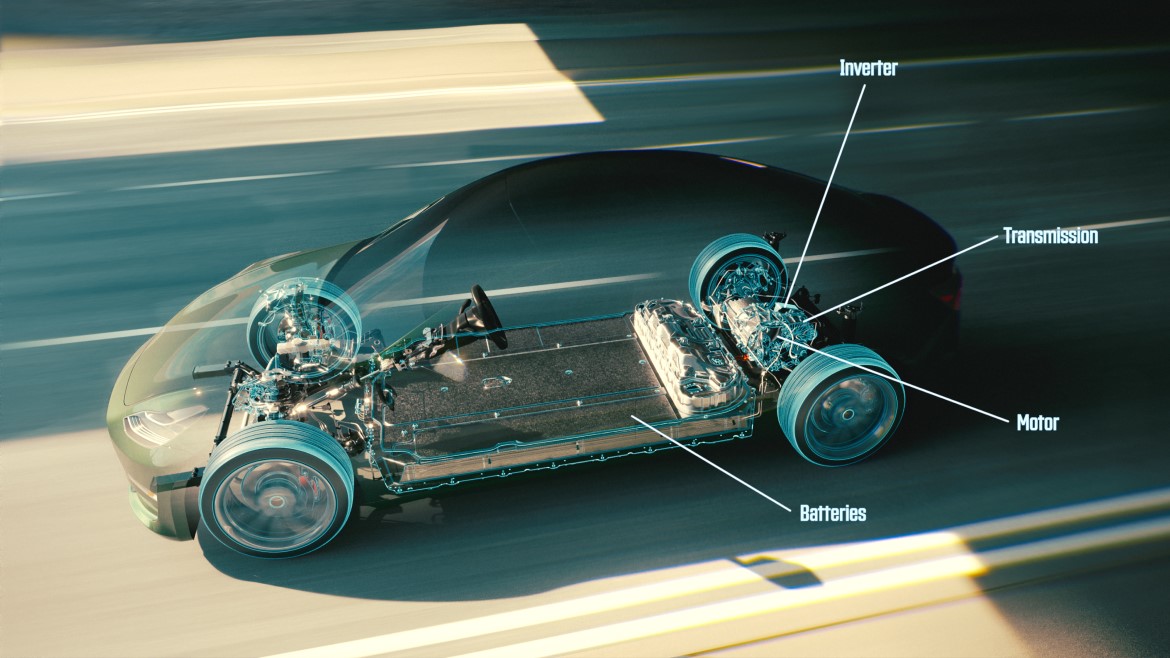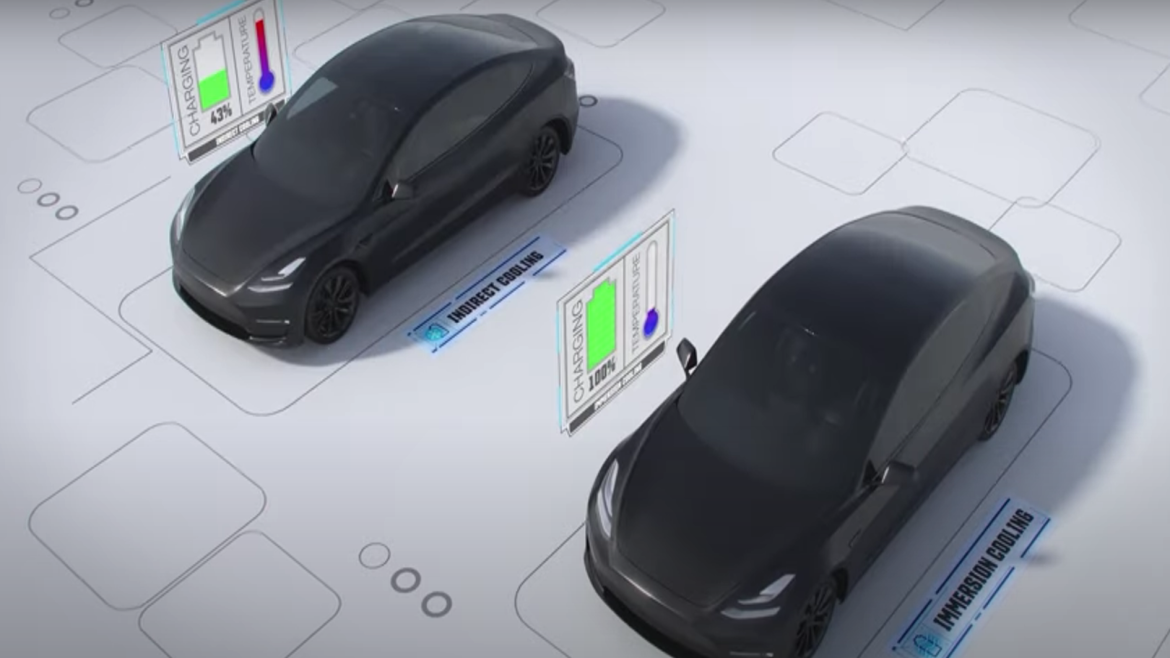Nov 9, 2023
Posted by Gareth Brown, Strategic Technology Manager
However, battery cooling is just the start. The industry overall is raising the concept of “battery thermal management fluids,” but in reality, a modern BEV requires thermal management beyond the battery. It’s the right time to consider how thermal management fluids can more holistically impact the overall design of the vehicle.
The Fluid Needs in a Battery Electric Vehicle

A typical BEV has four major hardware components that require fluid protection:
- Battery
- Inverter
- Motor
- Transmission
With the exception of first-generation BEVs that use indirect cooling methods, most of these fluids come in direct contact with the hardware components and require the right material compatibility and electrical properties.
The Demand for Fluids to Cool and Protect
Although the battery, inverter, e-motor and transmission all require a fluid, the performance requirements for each vary greatly. In the case of the battery and inverter, thermal management is key. The right fluid must dissipate heat rapidly while also having the right electrical properties and material compatibility.
On the other hand, consider the transmission and motor. The primary role of the fluid is to protect gears, bearings or other surfaces while delivering mechanical efficiency. This is coupled still with the necessary electrical properties, material compatibility and corrosion protection.
Additionally, the operating temperature and environment can vary with components – with the battery running optimally at a lower temperature than the motor and inverter.
As OEMs look at the design of a BEV holistically, they are understanding that the performance requirements of a fluid vary greatly considering the diversity of the hardware needs.
Consequences of a “Universal” Thermal Management Fluid
Today, BEV designs vary significantly, and the role of thermal management fluids is unsettled. Certain solution providers are advocating for “universal” battery thermal management fluids. The problem, though, is that the fluid requirements for BEV hardware vary significantly. Universal fluid solutions proposed in the market today are too viscous to cool effectively and yet are too thin to protect mechanical hardware. Limiting vehicle designs to just one single fluid solution creates unnecessary design constraints and performance compromises.
At the same time, it is not feasible to have a dedicated fluid for each hardware component. It’s not practical to have four tailor-made engineered fluids, as the result is unnecessary complexity and burdensome vehicle service.
How then should OEMs best consider thermal management fluids as a design enabler? The likely answer is fluids that are formulated in a way that groups the requirements according to different hardware pairings or in a way that groups fluids based on fluid properties. If it is not viable to have one universal fluid, and four distinct fluids is too complex, the best answer is a compromise between both approaches.
| Dedicated Fluids | Fluids for Hardware Assemblies | Fluids by Properties | "Universal" Fluid |
|---|---|---|---|
|
|
|
|
Thermal Management Fluids with Passenger BEVs
How might thermal management fluids work best in a passenger car? The second column where fluids are formulated based on hardware pairings provides a feasible path. You can imagine a fluid engineered specifically to cool the battery and enable faster charging times, focusing on thermal and safety performance as primary requirements.
A separate fluid could cool and protect an e-axle assembly, with the fluid requirements engineered to optimize wear protection, electrical properties and material compatibility. This would help support OEMs who likely want to simplify vehicle assembly by having a self-contained, modular assembly consisting of inverter, motor and transmission in a single unit—one fluid would match the entire assembly.
To some extent, this model is already being proved out in new vehicle developments. We’ve done the testing to determine that direct immersion cooling of the battery offers improved performance and safety. Likewise, a formulated e-axle thermal management fluid allows for improved thermal performance and transmission protection in a compact, modular EDU system when compared to existing driveline lubricants.
OEMs are no longer challenged to simply bring a BEV design to market. There will be market pressure to design more efficient BEVs. We should expect to see changes in vehicle design accordingly.
Learn about Lubrizol's EVOGEN™ thermal management fluids
Thermal Management Fluids in On-Highway and Off-Highway Commercial Vehicles
Thermal management fluid solutions might differ for on-highway and off-highway commercial vehicles. The rationale for a different approach is based on the greater diversity of vehicle designs.
Commercial vehicles vary greatly in their duty cycles and power needs, and vehicle performance is key. Also, historically, fluids in an off-highway vehicle are multi-purpose. As an example, the same transmission fluid may also deliver hydraulic and wet brake performance.
Some of these applications in commercial vehicles, and especially off-highway applications, benefit greatly from highly active additive chemistries that are less suited to exposure to electrical components and applications. To address the fluid requirements, fluids can be grouped according to their primary role of cooling or protection, or “fluids by properties” approach in the graphic.
This combination of transmission performance and vehicle duty cycle provides an opportunity to optimize system performance by separating the transmission from the electrical components. By optimizing thermal performance for electrical components, the right fluid can unlock up to 16% power gains in an electric motor compared to a non-optimized dielectric coolant.
Ultimately, as OEMs seek to design vehicles with greater performance, reliability and efficiency, we expect to see the market shifting away from a universal fluid approach and instead toward formulated thermal management fluids that optimize performance for hardware pairings or vehicle systems and that are flexibly tailored to unlock performance in different hardware systems.









